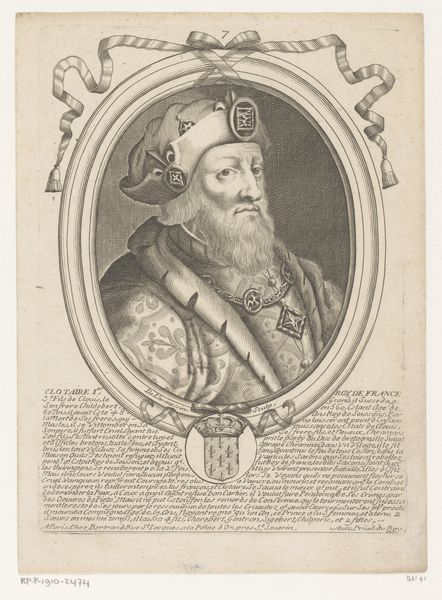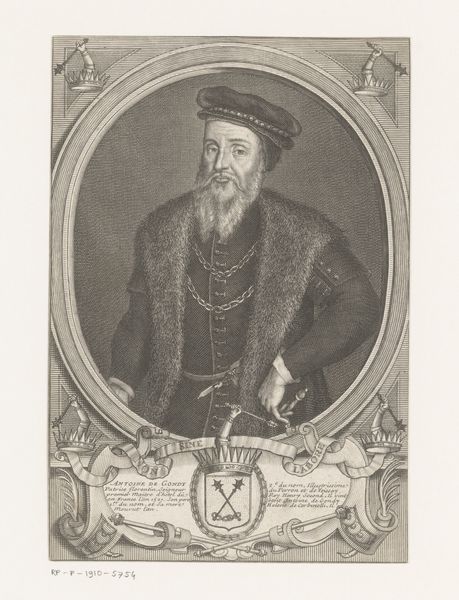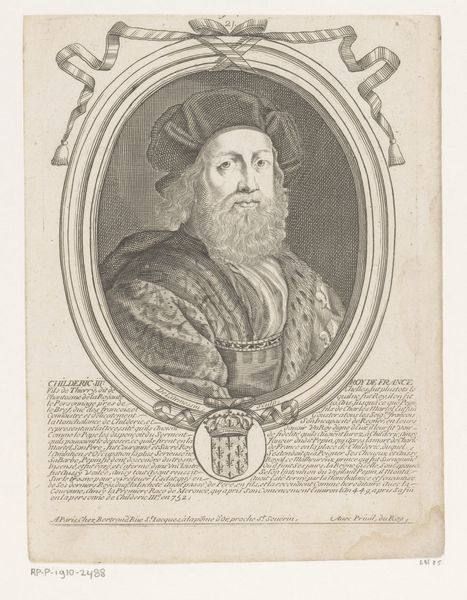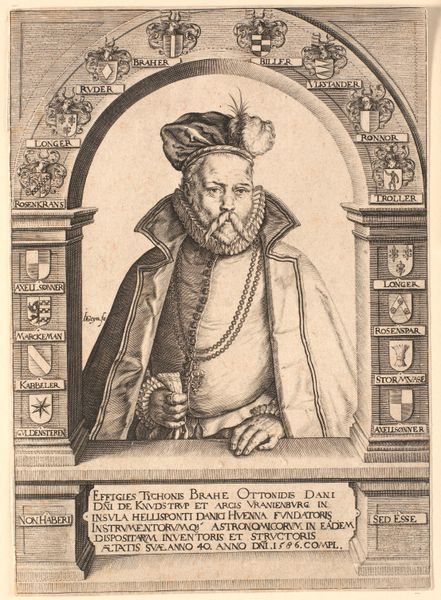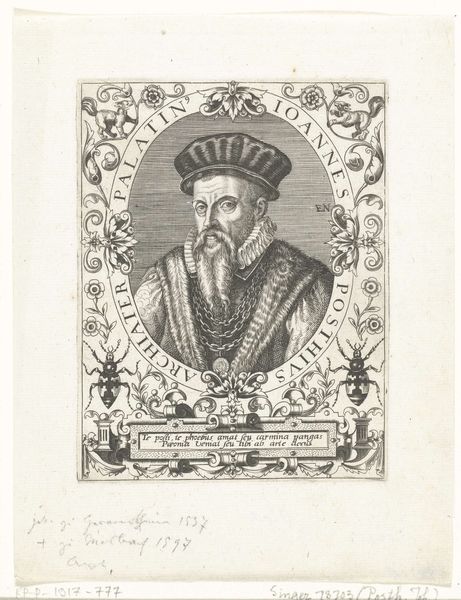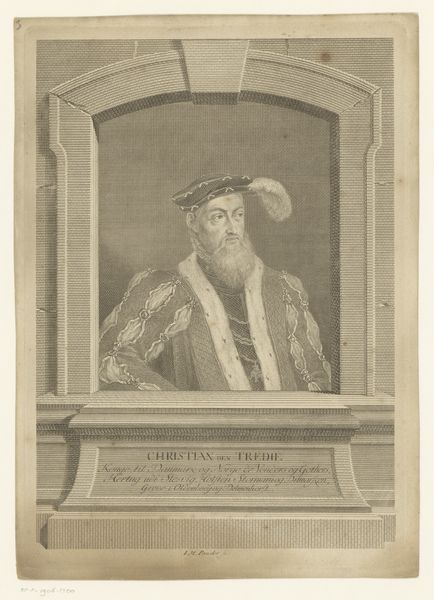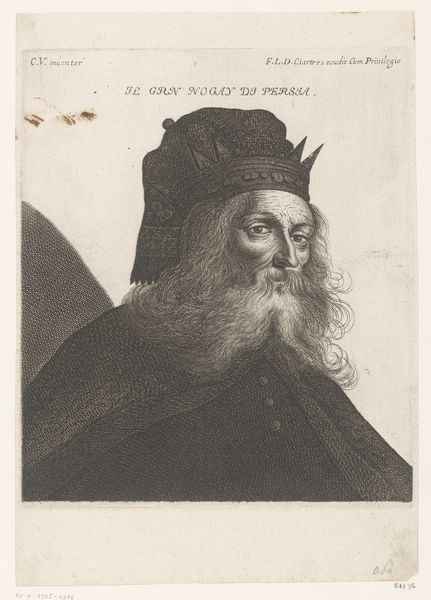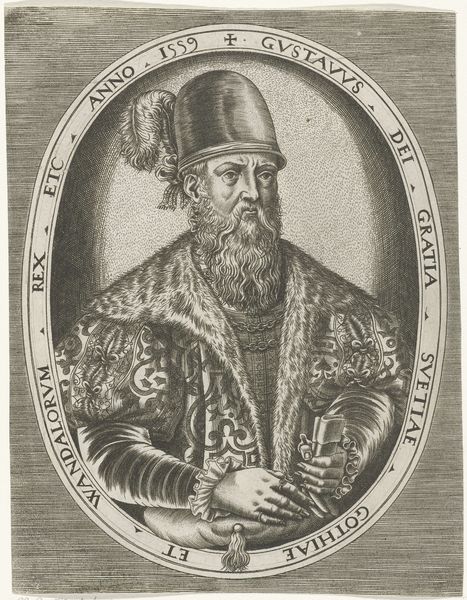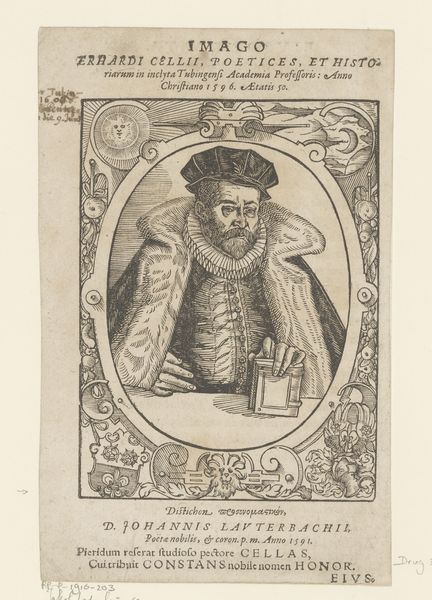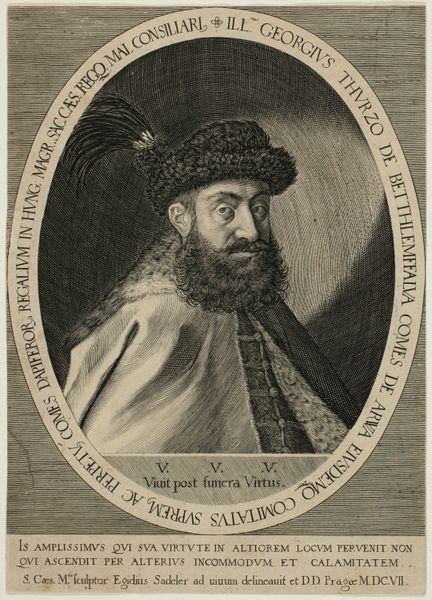
Dimensions: support: 2286 x 1460 mm
Copyright: CC-BY-NC-ND 4.0 DEED, Photo: Tate
Curator: This is an imposing portrait of George Talbot, the 6th Earl of Shrewsbury, painted by an artist from the British School sometime in the 17th century. The scale is rather impressive, over two metres tall. Editor: He looks utterly trapped, doesn't he? Caught in a rigid performance of power, suffocated by that enormous ruff. Curator: The textiles alone tell a story: the stiff collar, the heavy velvet, the gold trim. Each element speaks to the wealth and the social expectations placed upon him. Editor: Yes, but what does he actually *feel*? I see a glimmer of something behind the Earl's eyes, a sadness maybe. Or perhaps it's just boredom with the whole charade. Curator: The production of such a garment required extensive labor, skilled artisans, and access to costly materials, underscoring the vast social and economic hierarchies of the time. Editor: Ultimately, it’s hard not to wonder what it cost him, to wear all that weight. Curator: Indeed, a potent visual representation of the burdens of nobility. Editor: A portrait of the material and the metaphysical.
Comments
tate 6 months ago
⋮
http://www.tate.org.uk/art/artworks/british-school-17th-or-18th-century-portrait-of-george-talbot-6th-earl-of-shrewsbury-t03032
Join the conversation
Join millions of artists and users on Artera today and experience the ultimate creative platform.
tate 6 months ago
⋮
George Talbot (1528?-1590) was one of the richest men of his time. Elizabeth I made him guardian of the imprisoned Mary Queen of Scots and asked him to preside at Mary's execution in 1587. This striking image seems to be either a later copy of a lost original portrait of the Earl, or perhaps an 18th-century pastiche based on a known head-and-shoulders portrait from 1580. The misunderstood depiction of the sword-hilt is one of various details that suggest this. Such pastiches are commonly found in country-house collections. They would have been commissioned to fill a gap in a display of ancestors or famous historical figures. This is a useful example of the way that later generations used portrait images. Gallery label, August 2004
